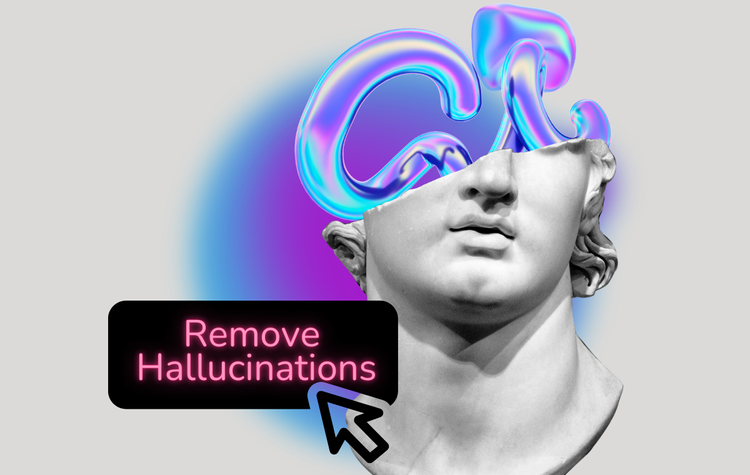What are the Different Types of Chatbots?
Understanding the different types of chatbots requires exploring how AI has evolved. Generative AI has dramatically improved chatbots' ability to understand complex questions and converse naturally, and generative AI chatbots will quickly displace older generations of chatbots.

Artificial Intelligence (AI) has emerged as a game-changer in customer support.
AI chatbots, in particular, have taken center stage, permanently changing how businesses interact with their customers.
As AI continues to improve, AI chatbots also continue to improve. Generative AI is the most recent type of AI to impact AI chatbots.
Generative AI chatbots excel at understanding complex customer queries. They also have highly relevant, context-aware responses that flow naturally in human conversation.
The Importance of AI in Chatbots
It's crucial to understand the significance of AI in chatbots.
AI chatbots leverage algorithms and machine learning to understand user queries, context, and nuances. The AI enables chatbots to provide more accurate and relevant responses.
This enhances the customer experience and streamlines and automates many aspects of customer support.
What are the different types of chatbots?
Rule-Based Chatbots
Rule-based chatbots were the first generation of AI chatbots that function based on pre-established rules or options. They are well-suited for managing simple tasks. Rule-based chatbots necessitate a defined set of rules or decision trees. The chatbot initiates by presenting a query to the user: "How may I be of assistance to you today?"
The chatbot can then show either a pre-determined answer, like "Our standard shipping policy is 4 days."
The chatbot has the ability to ask a further question and provide a list of predetermined options.
This gives the user a similar experience to navigating an interactive voice response (IVR) tree. Rather than pressing a number on their phone, they can select a predetermined choice.
Rule-based chatbots can be beneficial for companies seeking to address common customer queries. However, these chatbots may frustrate users as they usually do not allow for open-ended questions.
Additionally, creating and managing all the rules and decision trees can be a time-consuming task.
Keyword Detection Chatbots
Keyword detection chatbots are another basic type of AI chatbot. These chatbots analyze the text and attempt to detect pre-defined keywords. When the chatbot detects a keyword, it displays a pre-defined response.
Keyword detection chatbots give the end user more flexibility to enter their specific question.
Keyword detection chatbots, however, have limited ability to understand complex customer questions and can be frustrating to end users.
The a keyword detection chatbot detects a keyword, it will often respond with a statement like:
"I think you were asking a question related to the following."
However, the keyword detection chatbot is only detecting the keyword. It's often not detecting the context around the keyword.
For example, let's assume a pre-defined keyword is "return policy." The predetermined response is to show a link to the return policy page. The page states that customers must return items within 14 days of purchase.
If one customer enters the question, "What is your return policy?" the answer is relevant and appropriate.
Assume a different customer asks, "There was a shipping delay, and I only received my item 15 days after purchase. Do you make exceptions to your return policy?"
This is clearly a more complex question. The keyword detection bot will show a link to the company's return policy page. The ill-suited answer will frustrate the customer, and the customer will likely need to escalate to a human agent.
Natural Language Processing (NLP) Chatbots
NLP chatbots were the next generation of AI chatbots.
Many in the industry often refer to NLP chatbots as "conversational AI chatbots". These chatbots allow users to ask questions freely, rather than limiting them to a set of options.
By utilizing NLP, these chatbots can understand the intention behind user queries. The chatbot then compares the query with a predetermined list of questions and their corresponding answers.
The NLP chatbot often responds, "I believe your question is related to the following," and displays the predetermined question and answer.
Instead of detecting keywords only, NLP chatbots matches the customers' questions to pre-defined questions.
NLP chatbots offer a superior user experience compared to rule-based chatbots and keyword matching chatbots. They still, however, struggle to comprehend intricate inquiries from customers.
Implementing and maintaining an NLP chatbot requires considerable effort. You will need to compile a comprehensive list of frequently asked questions (FAQs) and their corresponding answers.
Having shorter FAQs raises the likelihood of the chatbot responding with a message like, "Apologies, I didn't grasp your question."
You may also have to create multiple variations of the same question. This will increase your workload significantly and is quite tedious. It's also crucial to regularly update the FAQ to keep it current.
Generative AI Chatbots
The latest generation of AI chatbots is generative AI chatbots.
These chatbots utilize extensive language models ("LLMs") to comprehend the user's inquiry and formulate a reply. The most famous LLMs include OpenAI's GPT-3.5 and GPT-4.
LLMs are advanced AI models that excel in understanding natural language and predicting the subsequent word in a dialogue.
As a result, generative AI chatbots can create entirely unique responses and engage in very human-like conversations. ChatGPT is the most famous generative AI chatbot.
A generative AI chatbot, or GPT chatbot, has numerous advantages over question-matching chatbots, keyword matching bots, and NLP/question-matching bots.
From a consumer's standpoint:
- Generative AI chatbots excel at comprehending intricate and nuanced queries.
- They can automatically identify the user's language and respond accordingly.
- They have a better grasp of the entire context of the conversation, resulting in more natural interactions between customers.
- They exhibit a higher level of empathy. Chatting with a generative AI chatbot is like chatting with a human.
From a brand's perspective:
- Generative AI chatbots are excellent at synthesizing vast amounts of your proprietary knowledge, including product documents, help desk responses, and email replies.
- Generative AI chatbots require less maintenance. Generative AI chatbots do not depend on FAQs so there is no need to constantly update them. Instead, you can simply feed the generative AI chatbot with your entire knowledge base. There's also no need to write the same question in multiple ways.
- Because generative AI chatbots can comprehend complex queries, they can respond quckly and resolve problems faster. Consequently, you'll see improvements in your CSAT scores and NPS scores. In addition, higher deflection rates will improve the efficiency of your customer service team.
- You can provide consistent support across all of your channels, including live chat support, email support, text or SMS support, Slack support, and Discord support.
Conclusion
AI chatbots have redefined the customer support landscape, offering businesses a powerful tool to enhance customer interactions and streamline operations.
Understanding how both AI and AI chatbots have evolved is essential for decision-makers in customer service departments.
Rule-based chatbots constrain customer's choices and are a bad user experience.
Keyword detection chatbots have limited in their ability to understand complex customer questions.
NLP-based chatbots are like keyword detection bots. They try to match the user's questions to a list of pre-defined questions.
Generative AI enables a new breed of chatbots. With generative AI, chatbots are able to understand complex queries, provide relevant and accurate answers, and detect/respond in 100 languages. Generative AI chatbots are also easier to maintain.
Given the compelling benefits of generative AI, generative AI chatbots will likely quickly displace existing chatbots with older technology.
Are you ready to upgrade to a generative AI chatbot? Build a fully customized generative AI chatbot for free with Gleen AI, or request a demo of Gleen AI.



